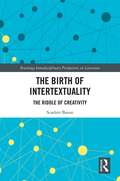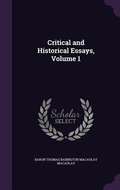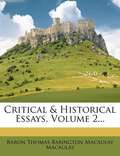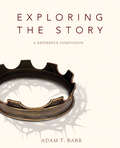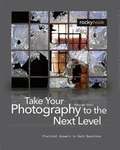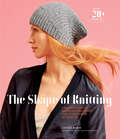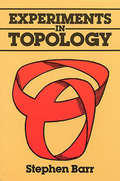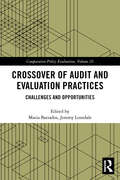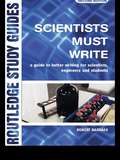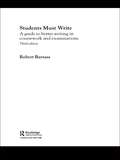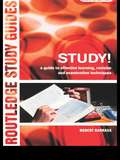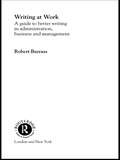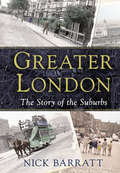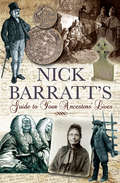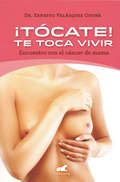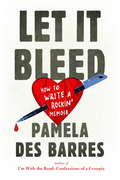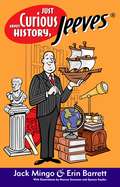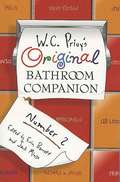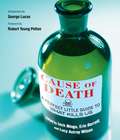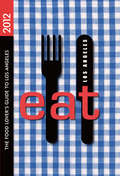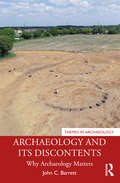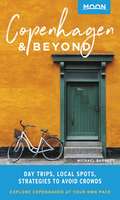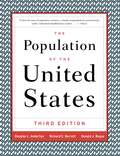- Table View
- List View
The Birth of Intertextuality: The Riddle of Creativity (Routledge Interdisciplinary Perspectives on Literature)
by Scarlett BaronWhy was the term ‘intertextuality’ coined? Why did its first theorists feel the need to replace or complement those terms – of quotation, allusion, echo, reference, influence, imitation, parody, pastiche, among others – which had previously seemed adequate and sufficient to the description of literary relations? Why, especially in view of the fact that it is still met with resistance, did the new concept achieve such popularity so fast? Why has it retained its currency in spite of its inherent paradoxes? Since 1966, when Kristeva defined every text as a ‘mosaic of quotations’, ‘intertextuality’ has become an all-pervasive catchword in literature and other humanities departments; yet the notion, as commonly used, remains nebulous to the point of meaninglessless. This book seeks to shed light on this thought-provoking but treacherously polyvalent concept by tracing the theory’s core ideas and emblematic images to paradigm shifts in the fields of science, philosophy, psychoanalysis, and linguistics, focusing on the shaping roles of Darwin, Nietzsche, Freud, Saussure, and Bakhtin. In so doing, it elucidates the meaning of one of the most frequently used terms in contemporary criticism, thereby providing a much-needed foundation for clearer discussions of literary relations across the discipline and beyond.
Critical and Historical Essays -- Volume 1
by Baron Thomas Babington Macaulay MacaulayCritical and Historical Essays: Contributed to the Edinburgh Review (1843) is a collection of articles by Thomas Babington Macaulay, later Lord Macaulay. They have been acclaimed for their readability, but criticized for their inflexible attachment to the attitudes of the Whig school of history.
Critical and Historical Essays -- Volume 2
by Baron Thomas Babington Macaulay MacaulayEssays by Macaulay in the Edinburgh Review published between 1832 and 1839 on Horace Walpole, the War of Spanish Succession, William Pitt, Sir James Mackintosh, Lord Bacon, and Gladstone.
Exploring the Story: A Reference Companion
by Adam BarrMany people today encounter strange events, names, customs and/or people when they pick up their Bible to read. The world of the Bible can seem very distant to modern readers, even if they are reading a contemporary translation. To help readers gain a better understanding of the world of the Bible, Zondervan has developed a one-volume, handy-size reference resource that will take readers from Genesis to Revelation and provide helpful insights along the way through the use of full-color photos, maps, charts, timelines, character descriptions, special articles on important biblical topics and background information about the nations, and places and customs that they will encounter in their reading of the Bible. What sets this reference resource apart from others is that it is designed to serve as a companion to The Story, a Bible that allows the events, poems, and teachings to the Bible to read like a novel. This reference resource is arranged according to the chapters as found in The Story with each section containing vital information for understanding the biblical text. The Story Reference Companion is a must-have reference volume for teachers and participants engaged in Bible study, especially those reading through The Story.
Take Your Photography to the Next Level
by George BarrThis book is for the photographer who strives to achieve a higher level of results in their work. Take Your Photography to the Next Level is based on a series of essays originally featured on the popular Luminous Landscape website. Barr tackles some of the rarely discussed, yet essential aspects of successful photography. Here is where photographers will learn what is required in order to grow in their creativity and to gain a deeper understanding of their craft. With a foreward by Michael Reichmann. Topics include:Creativity Dealing with disappointment Developing an "eye" Making stronger images What photographs well Where to go looking for the best photographic subjects How to approach subject material A great image is just around the corner Dealing with failure Mind games Becoming a self-aware photographer Framing, cropping, & manipulating prints to create mood and transmit your message
The Shape of Knitting: A Master Class in Increases, Decreases, and Other Forms of Shaping
by Lynne BarrLearn and execute numerous techniques in knitwear shaping with this guide for advanced knitters, featuring twenty-four stylish projects.In The Shape of Knitting, innovative designer Lynne Barr gives readers a fascinating, in-depth master class on the techniques that can be used to shape flat and dimensional pieces of knitting?increases, decreases, short rows, dividing and combining stitches, and adding sections. She both reviews tried-and-true methods, explaining their pros and cons, and showcases many new ones that she has masterminded herself. To illustrate the best uses of these innovations, she includes twenty-four fashion-fresh, easy-to-wear projects, focusing mainly on accessories that can be finished quickly, such as scarves, cowls, shawls, hats, and mittens. Fun, cool photos of the finished designs combined with clear, close-up, step-by-step photos make this groundbreaking book both beautiful and hardworking.Praise for The Shape of Knitting“If you are a knitter who likes going beyond tradition, going beyond the preferred wisdom of what you can and cannot do in knitting, then you should get this book. It may open your eyes to a whole new way of designing,” —My Central Jersey’s In Stitches blog“On the heels of her mind-stretching book, Reversible Knitting, comes The Shape of Knitting. She’s figured out a cool style of slipper for this book that I’m smitten with. If you need to feed your knitting mind, get this book . . . it’s a feast,” —Knitty.com “I was super impressed with Lynne Barr’s creative knitting projects especially the Big Button cowl,” —SweetlyMade.com“Innovative designer Lynne Barr’s in-depth masterclasses of techniques in new book, The Shape of Knitting, add dimension to knits as beautiful as they are groundbreaking. A must for keen pattern adapters and knitters,” —Mollie Makes “I didn’t think it was possible to admire Lynne Barr more than I did after her last book. Boy, was I wrong!” —Kangath Knits “If you have any interest in the creative possibilities of knitwear design, then you need to immediately get hold of a copy The Shape of Knitting to put on your shelf next to Lynne’s previous book,” —Kate Davies Designs
Experiments in Topology
by Stephen Barr"A mathematician named KleinThought the Moebius band was divine.Said he: 'If you glueThe edges of two,You'll get a weird bottle like mine.' " -- Stephen BarrIn this lively book, the classic in its field, a master of recreational topology invites readers to venture into such tantalizing topological realms as continuity and connectedness via the Klein bottle and the Moebius strip. Beginning with a definition of topology and a discussion of Euler's theorem, Mr. Barr brings wit and clarity to these topics:New Surfaces (Orientability, Dimension, The Klein Bottle, etc.)The Shortest Moebius StripThe Conical Moebius StripThe Klein BottleThe Projective Plane (Symmetry)Map ColoringNetworks (Koenigsberg Bridges, Betti Numbers, Knots)The Trial of the Punctured TorusContinuity and Discreteness ("Next Number," Continuity, Neighborhoods, Limit Points)Sets (Valid or Merely True? Venn Diagrams, Open and Closed Sets, Transformations, Mapping, Homotopy)With this book and a square sheet of paper, the reader can make paper Klein bottles, step by step; then, by intersecting or cutting the bottle, make Moebius strips. Conical Moebius strips, projective planes, the principle of map coloring, the classic problem of the Koenigsberg bridges, and many more aspects of topology are carefully and concisely illuminated by the author's informal and entertaining approach.Now in this inexpensive paperback edition, Experiments in Topology belongs in the library of any math enthusiast with a taste for brainteasing adventures in the byways of mathematics.
Crossover of Audit and Evaluation Practices: Challenges and Opportunities (Comparative Policy Evaluation)
by Maria Barrados Jeremy LonsdaleCrossover of Audit and Evaluation Practices brings together academic analysis with insights from practitioners to discuss the potential for collaboration in audit and evaluation practices between three professional disciplines. Clearly written and thoughtfully organized, this volume is structured in three parts to deal with theory, practice issues and how the practices have worked together. • Part One provides definitions of performance audit, internal audit and program evaluation. • Part Two addresses several challenges that professionals face in applying these standards and principles. • Part Three contains examples of organizational collaboration between the practices, how they have worked together and the lessons that were learned from that experience. Specific cases from the Government Accountability Office, and UNESCO, UNDP and Inter-Americas Development Bank illustrate what has worked or not and suggest reasons why. Crossover of Audit and Evaluation Practices offers even the most skilled and experienced professional insight on how to bridge some of the divides. It will help generate a better understanding of the activities and services that are either imposed on them or are freely available and help to stimulate their optimal use.
Crossover of Audit and Evaluation Practices: Challenges and Opportunities (Comparative Policy Evaluation)
by Maria Barrados Jeremy LonsdaleCrossover of Audit and Evaluation Practices brings together academic analysis with insights from practitioners to discuss the potential for collaboration in audit and evaluation practices between three professional disciplines. Clearly written and thoughtfully organized, this volume is structured in three parts to deal with theory, practice issues and how the practices have worked together.• Part One provides definitions of performance audit, internal audit and program evaluation.• Part Two addresses several challenges that professionals face in applying these standards and principles.• Part Three contains examples of organizational collaboration between the practices, how they have worked together and the lessons that were learned from that experience. Specific cases from the Government Accountability Office, and UNESCO, UNDP and Inter-Americas Development Bank illustrate what has worked or not and suggest reasons why.Crossover of Audit and Evaluation Practices offers even the most skilled and experienced professional insight on how to bridge some of the divides. It will help generate a better understanding of the activities and services that are either imposed on them or are freely available and help to stimulate their optimal use.
Scientists Must Write: A Guide to Better Writing for Scientists, Engineers and Students
by Robert BarrassGood writing and communication skills are essential in many areas of science and engineering, to help observation, thinking and remembering, to organize work and to avoid stress. Written by a scientist for scientists, this book is much more than a textbook of English grammar – it is a valuable source of information for all aspects of writing in scientific and technical situations. The only book focusing on the ways in which writing is important to the scientific community, this book assists readers on: * how to write and choice of words* using numbers and illustrations* writing project reports, theses and papers for publication* giving a short talk or presentation. The new edition of Scientists Must Write has been fully revised and updated to take account of the changes in information and communications technology including word processing and information storage and retrieval; new appendices on punctuation, spelling and computers; and useful exercises to improve writing. This popular guide will be of great use to undergraduates, postgraduates, professional scientists and engineers.
Students Must Write: A Guide to Better Writing in Coursework and Examinations
by Robert BarrassThe third edition of this well-respected guide will help students of all subjects to write more clearly and more effectively, with valuable advice on how to: make good notes find information, cite sources and list references write better coursework assignments achieve higher grades in tests and examinations prepare a well-organised dissertation, long essay, term paper, project report or thesis write effective letters and applications. Written by an esteemed author with many years of experience of helping students improve key writing skills, this text also includes straightforward guidance on word choice and the new challenges and opportunities afforded by the use of computers. Exercises are also provided for students to put the theories into practice, either individually or in group work.
Study!: A Guide to Effective Learning, Revision and Examination Techniques
by Robert BarrassWhether entering higher education straight from school, or returning to study later in life, students need to develop effective study skills to get the most out of a course. Whatever the subject, this book will help to achieve the aims of the student by offering practical advice and useful techniques for successful study. These skills are not always taught as part of courses because of time restriction, but with an increased performance emphasis for lecturers they are vital to the success of the course. In addition to this with more and more people returning to education and undergoing Continuing Professional Development the audience for this book is growing rapidly. The book covers three main areas: * accepting responsibility for learning: personal well-being, avoiding stress and organising time* student centred learning: developing the ability to learn and communicate through thinking, listening, observing, writing and talking* revision and examination techniques: approaching examinations with confidence. With additional help of choosing the right course and a new section on computer skills, Study! will be a valuable addition to the bookshelf of any student.
Writing at Work: A Guide to Better Writing in Administration, Business and Management
by Robert BarrassMany employers complain about the poor communication skills of many young people seeking employment; and many people in employment are handicapped by the poor quality of their written work. While bad spelling, ineffective punctuation and faults in grammar create barriers between the writer and the reader, good English makes the reader feel at ease.The benefits of being a good writer at work are:Managers need to be able to communicate in order to get ideas across. If they cannot, they will be unable to make their viewpoint heard and they will be unable to influence customers, suppliers and colleagues as desiredIf you can write well, you will find that your views are given prominence over those of others. Effective communication, and that includes writing, is the key to career success and advancementThis book is for those who have difficulty in getting thoughts into words or their ideas across, as well as those who are satisfied with their writing but are ready to consider the possibility of improving it. It is all about the ways in which writing at work is important - helping the reader to observe, remember, think, plan, organise and communicate.
Greater London: The Story of the Suburbs
by Nick BarrattLondon's suburbs may stretch for well over 600 square miles, but in historical accounts of the capital they tend to take something of a back seat. In Greater London, historian Nick Barratt places them firmly centre stage, tracing their journey from hamlets and villages far out in the open countryside to fully fledged urban enclaves, simultaneously demonstrating the crucial role they have played in the creation of today's metropolis.Starting in the first century AD, he shows how the tiny settlements that grew up in the Thames Valley gradually developed, and how they were shaped by their proximity to the city. He describes the spread of the first suburbs beyond the city walls, and traces the ebb and flow of population as people moved in to find jobs or away to escape London's noise and bustle. He charts the transformation wrought by the coming of the railways, the fight to preserve Hampstead Heath, Epping Forest and other green spaces and the struggle to create a London-wide form of government. He gives an account of wartime destruction and peacetime reconstruction, and then brings the story to the present with a description of the very varied nature of today's suburbs and their inhabitants. In the process, he evokes Tudor Hackney and Georgian Hampton, explains why Victorian Battersea and Finchley were so different from one another, and follows Islington's fall from grace and subsequent recovery.Magnificently illustrated throughout with contemporary engravings and photographs, this is the essential history for anyone who has ever lived in London.
Tracing Your Personal Heritage: A Guide for Family Historians
by Nick BarrattFamily history is only one part of your personal heritage - there's more to your background than who your ancestors were. This differs from most books on the market as it places this process on an equal footing with the social history that surrounds each generation, as much as the technical know-how on which records to examine, and where. This book takes you on a unique journey back in time, examining the houses, streets, communities and ways of life that shaped the world around us, and in particular the precise circumstances that made us who we are today. Furthermore, this book will not just explain how and where to undertake this personal detective process - it shows you how to organise and shape your findings, and create your own personal archive using the latest technology and online resources, and how to add your store of knowledge to the emerging social networks that allow us to create a People's Archive and tell the forgotten story of the past that never makes it into the textbooks.
¡Tócate! Te toca vivir: Encuentro con el cancer de mama
by Joaquin M. BarreroUna guía que te brinda las herramientas necesarias para salvar tu vida a tiempo y prevenir el cáncer de mama, ¡Tócate y sálvate! El objetivo de este libro es claro: concientizar para la detección y el diagnóstico oportuno del cáncer de mama, fomentar la autoexploración y el autoconocimiento de los senos, como parte integral de la salud. ¡Tócate! Te toca vivir explica el origen y los factores de riesgo en torno al cáncer de mama. De la manera más sencilla posible, te dice que es el cáncer de mama y su desarrollo en las diferentes etapas. Además, te cuenta cómo afecta a la paciente y su familia, porque se trata de una enfermedad que nos toca y toda la sociedad debe responsabilizarse.
Let It Bleed: How to Write a Rockin' Memoir
by Pamela Des BarresAuthor of the international bestseller I'm with the Band: Confessions of a Groupie, Pamela Des Barres shares with women the art of memoir writing.For the last fourteen years, Pamela Des Barres has been teaching an eight-week women's "femoir" writing workshop. She found that the music-loving ladies who showed up at her door had pent-up stories to tell. Many of them had read her two memoirs, which were wildly personal and deeply confessional, and felt comfortable opening up and experiencing that same freedom of expression. In this book, Des Barres guides women through the process of writing their memoirs. She has developed exercises to help her "dolls" recall, remember, relive, and reveal their memories, transgressions, temptations, their sleepless nights and brilliant afternoons, loves and losses, fears and regrets, secrets, sins, and sorrows. The assignments in Femoir have proven incredibly cathartic for her students. Just as intimate as one of her in-person workshops, this book includes some of Des Barres's own stories, as well as those of the women she's taught. Every person has an incredible story to tell—they just need to figure out how to tell it. By understanding themselves better through these writing exercises, women learn to be more fearless, free-spirited, and willing to try something new.
Just Curious About History, Jeeves®
by Erin Barret Jack MingoYou'll get the answers to these fascinating questions and many, many more in the wildly entertaining, un-put-down-able Just Curious About History, Jeeves. Based on the legion of unexpected questions posed at the popular Ask Jeeves Web site, Just Curious tackles all the puzzlers, bafflers, and stumpers that find their way into our everyday lives. What were the Pig Wars and were they actually caused by pigs? Who were the first gangsters? Did Cleopatra really wear makeup? Was Ivan the Terrible that terrible? Sure curiosity killed the cat, but satisfaction brought him back. So if you want to know how tall Napoleon was, whether Captain Kidd had any little Kidds, or who the heck Charles the Fat was, look no further than Just Curious About History, Jeeves- the unequivocal say-all, end-all, be-all authority on history's who, what, where, when, why, and how.
W. C. Privy's Original Bathroom Companion
by Erin Barrett Jack MingoHere you sit, brokenhearted ...with nothing to read but the writing on the wallpaper? Don't get flushed with despair! W. C. Privy's Original Bathroom Companion is a book that's good for your heart - the more you read, the better you'll feel. Designed to make a porcelain throne into a seat of higher learning, it's guaranteed to make a big splash with you, your friends, and your family. You want trivia, brain-teasers, facts, stories, or instructions on how to build an igloo? Then don't just stand there looking distressed - sit down and go with the guy whose name has become synonymous with the best in restroom reading: W. C. Privy!
W. C. Privy's Original Bathroom Companion, Number 2
by Erin Barrett Jack MingoNumber 2 in the W.C. Privy series, this bathroom companion is chock full of jokes, stories, historical factoids, quizzes, trivia, and pop culture fun. An ecletic reading array, the book includes:*Rules and Histories of Laughably Obscure Sports*The Night They Invented Champagne--the Accidental History of Bubbly Wine*I Was There! Eyewitness Accounts of Pompeii, the Chicago Fire, the Defeat of Custer, the San Francisco Earthquake*How to Escape Killer Bees*How to Build a Log Cabin*Before They Were Stars: Actors, Writers, Politicians and Rockers
Cause of Death: A Perfect Little Guide to What Kills Us
by Erin Barrett Jack Mingo Lucy Autrey WilsonFACE IT. WE CAN GO ANYTIME. BUT IN SO MANY DIFFERENT WAYS! Death becomes you, and it's just another fact of life explored in Cause of Death, a revealing abundance of startling data, false perceptions, bizarre fallacies, and some totally unexpected statistics about how, why, when, and where we all bite the dust, check out, buy the farm, kick the bucket, and all those other euphemisms for perishing after falling out of bed (roughly 1,800 fitful sleepers a year). It also answers questions most people never even consider (but should): Do crocodiles kill more people than alligators? Are we more prone to commit suicide or murder? How many still die from leprosy? Does salmonella have anything to do with salmon? Can the condition of your toenails predict your mortality? What's the connection between kitty litter and brain damage? Has irony ever killed anyone?* Disease, accidents, occupational hazards, poisons, plagues, infections, murder, fauna and fungi, insect bites, war, and even bison. What's the most popular killer of the decade? The rarest? How many deaths per year by age? Gender? Location? Time of day? Stupidity? All this and more in a book you really shouldn't be living without. * Yes! While experimenting with the safe preservation of food in snow, Sir Francis Bacon caught a cold and died.
EAT: Los Angeles
by Jean T. Barrett Miles Clements Colleen Dunn Bates Linda Burum Patricia SapersteinThe essential handbook for any food lover in Los Angeles, with more than 1,300 concise, clever reviews of the best places to eat, drink, shop, and taste.
Archaeology and its Discontents: Why Archaeology Matters (Themes in Archaeology Series)
by John C. BarrettArchaeology and its Discontents examines the state of archaeology today and its development throughout the twentieth century, making a powerful case for new approaches. Surveying the themes of twentieth-century archaeological theory, Barrett looks at their successes, limitations, and failures. Seeing more failures and limitations than successes, he argues that archaeology has over-focused on explaining the human construction of material variability and should instead be more concerned with understanding how human diversity has been constructed. Archaeology matters, he argues, precisely because of the insights it can offer into the development of human diversity. The analysis and argument are illustrated throughout by reference to the development of the European Neolithic. Arguing both for new approaches and for the importance of archaeology as a discipline, Archaeology and its Discontents is for archaeologists at all levels, from student to professor and trainee to experienced practitioner.
Moon Copenhagen & Beyond: Day Trips, Local Spots, Strategies to Avoid Crowds (Travel Guide)
by Michael BarrettWhether you're sipping coffee by a canal, exploring lavish palaces, or discovering the real meaning of hygge, get to know the Danish capital with Moon Copenhagen & Beyond.Explore In and Around the City: Meander through Copenhagen's most interesting neighborhoods, like the Inner City, Vesterbro, Nørrebro, and Christianshavn, and nearby areas, including Kronborg, Kongens Lyngby, Malmö, and moreGo at Your Own Pace: Choose from tons of itinerary options designed for foodies, history buffs, art lovers, and moreSee the Sights: Stroll cobbled streets and bike along picture-perfect canals, watch the changing of the guard at Amalienborg, picnic on the grounds of the Frederiksberg Palace, and spend an afternoon at the iconic old-school amusement park Tivoli GardensGet Outside the City: Visit the renowned art collection on the shores of the Øresund, unwind in the Swedish coastal city of Malmö, or stroll the old-fashioned fairground in Kongens LyngbySavor the Flavors: Snack on open-faced rugbrød (rye bread) sandwiches or delicious Danish pastries, sample Middle Eastern mezze or shawarma, or dine at Michelin-starred restaurantsExperience the Nightlife: From wine bars and craft cocktail lounges to thrifty bodegas and pop-up "Friday bars," dig into Copenhagen's vibrant nightlifeGet to Know the Real Copenhagen: Denmark local Michael Barrett shares his favorite spots in the cityFull-Color Photos and Detailed Maps throughout, plus a fold-out mapHandy Tools: Background information on the city's history and culture, plus tips on sustainable travel, what to pack, where to stay, and how to get aroundDay trip itineraries, favorite local spots, and strategies to skip the crowds: Take your time with Moon Copenhagen & Beyond.Want to experience more of Scandinavia? Try Moon Norway. Exploring more of Europe? Check out Moon Rome, Florence & Venice or Moon Barcelona & Madrid.
The Population of the United States (3rd edition)
by Richard E. Barrett Donald J. Bogue Douglas L. AndertonThis third edition, written with two new coauthors, combines 1990 census data with information from the Current Population Survey, the National Health Interview Survey, and numerous other sources, even including demographic data not available in any other published source.
